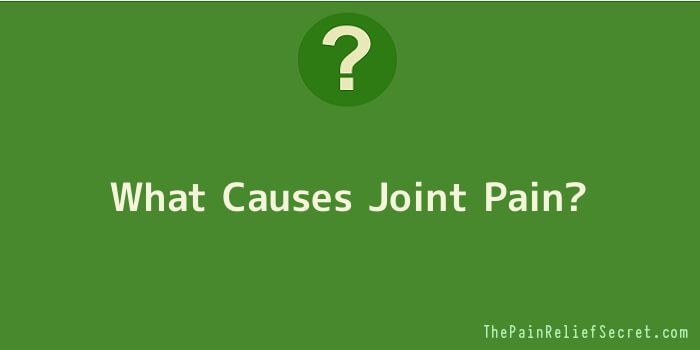
Joint pain can be a symptom of many disorders and diseases, but in general, joint pain is caused by a few relatively simple mechanisms. It is important to discuss the cause of your joint pain with your doctor in order to decide what treatment will be most effective in your individual case.
Most joint pain is caused by either mechanical problems within the joint or by inflammation, although most cases are a mix of both mechanisms.
1. Mechanical Disorders
One major category of disorders that cause joint pain is mechanical in nature. This means that there is something wrong with the joint capsule, the surfaces of the bones that slide past one another within the joint, or the fluid inside the joint. This causes the joint’s function to be compromised and the result is pain.
Thickening or scar tissue within the joint capsule can cause the joint’s range of motion. If it is pulling against this thickened tissue when moving the joint, it can result in pain. Painful thickening of the joint capsule is a feature of osteoarthritis.
Osteoarthritis pain is also caused by degeneration of the cartilage that lines the ends of the bones inside the joint. Cartilage is worn away over time by motion, and it can be damaged in cases of injury. Once this cartilage padding is thinned or worn away, bone is exposed inside the joint. This bone contains nerves that are sensitive to the rubbing of the bony surfaces together, resulting in pain.
The pain is more severe the more the cartilage wears away, and since the cartilage is unable to regenerate, the pain and damage get worse over time. Some of the worst joint pain is caused by eburnation, damage to underlying bone once the cartilage padding has been worn away entirely.
A final mechanical cause of joint pain is a disorder of the lubricating fluid found within the joint. If this fluid is too thin, as can be caused by inflammation and will be discussed below, or if it contains solid particles, it can cause pain when the joint is moved.
Gout is a joint disease caused by crystals of uric acid forming in the joint, and these crystals are sharp and poke into the cartilage and the joint capsule when the joint is moved, causing intense pain.
2. Inflammation
A second group of disorders causing joint pain are caused by inflammation. Inflamed joints swell and fill with extra joint fluid, which can be too thin and watery to lubricate the joint properly.
The swelling and fluid stretch the joint capsule, which is painful, and may become more painful when the joint is moved and the pressure increases. The watery joint fluid may also contain chemicals that aid the immune system in fighting infections that can damage cartilage, causing even more pain.
Almost all mechanical joint problems cause inflammation when the joint is moved, so inflammation and mechanical changes go hand in hand and create a vicious cycle of joint pain and damage.
Osteoarthritis, joint injuries, and gout are all painful in part because of the joint inflammation that they cause. In addition, some joint disorders are painful primarily or solely because of inflammation.
For example, rheumatoid arthritis and lupus affecting the joints are painful because the immune system has turned on the body and is attacking the joints, causing inflammation and damaging the cartilage and bone as it would damage invading bacteria or viruses.
In the long term, the body’s attempt to heal this damage can also cause changes to the joint capsule and mechanical pain. However, the primary reason that rheumatoid arthritis is painful is the inflammation that is going on, and when treatment brings the inflammation under control, patients experience dramatically less pain.
A final cause of joint pain is infection. This cause is not very common in the developed world, but it is an important cause to rule out when trying to determine why a patient’s joints hurt. This may be a direct infection of bacteria into a single joint, or a bacterial infection throughout the body such as Lyme disease.
A variety of viruses and bacteria can result in joint pain. This is usually because of inflammation caused by the body’s attempt to destroy microorganisms, and mechanical changes in the joint only occur if the infection is not rapidly eliminated.
While most joint pain is caused by a combination of inflammation and mechanical changes that alter the way the joint moves, your doctor can help determine the exact cause of your joint pain. Only then can it be treated effectively.
